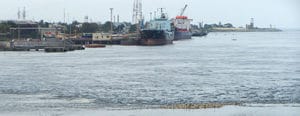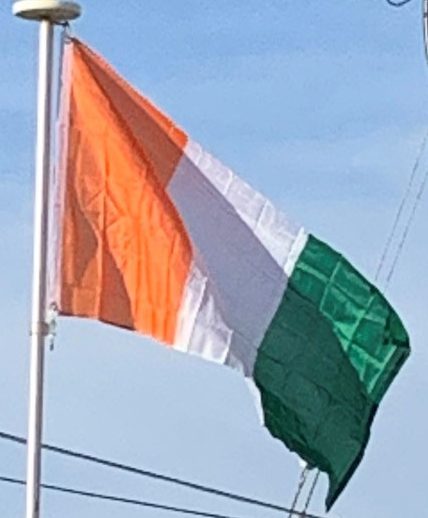Ivory Coast’s economy has grown faster than that of most other African countries since independence. One possible reason for this might be taxes on export agriculture. Ivory Coast, Nigeria, and Kenya were exceptions as their rulers were themselves large cash-crop producers, and the newly independent countries desisted from imposing penal rates of taxation on export agriculture, with the result that their economies were doing well.
Transportation:
Ivory Coast invested remarkably in its transport system. Transport infrastructures are much more developed than they are other West African countries despite a crisis that restrained their maintenance and development. Since its independence in 1960, Ivory Coast put an emphasis on increasing and modernizing the transport network for human as well as for goods. Major infrastructures of diverse nature were built including railways, roads, waterways, and airports. In spite of the crisis, neighbor countries (Burkina Faso, Mali, Niger, and Guinea) still strongly depend on the Ivorian transport network for importing, exporting, and transiting their immigrants to Ivory Coast.

The nation’s railway system is part of a 1,260 km long route that links the country to Burkina Faso and Niger. 1,156 km of railroad links Abidjan to Ouagadougou, capital of Burkina Faso. Built during colonial era by the firm Abidjan-Niger (RAN), this railroad freed several landlocked countries among which were ex-High-Volta (Burkina Faso), Niger, and Mali. This railroad, operated by Sitarail, plays a key role as regards to the carriage of the goods (livestock) and the transport of people between Ivory Coast and border countries: 1 million tons of goods have transited in 2006.
Ivory Coast road network spreads over 85 000 km consisting of 75 000 unpaved, 65 000 km, and 224 km highways. It provides national and international traffic with neighbor countries.
The Trans–West African Coastal Highway provides a paved link to Ghana, Togo, Benin and Nigeria, with paved highways to landlocked Mali and Burkina Faso feeding into the coastal highway. When construction of roads and bridges in Liberia and Sierra Leone is complete, the highway will link to another seven Economic Community of West African States (ECOWAS) nations to the west and north-west. Although maintenance and renovations works are being carried out since middle-2011, over 80% of the Ivorian network is older than 20 years and therefore damaged.
The country counts two 4-laned motorways, the first one running from Abidjan to Yamoussoukro for a length of 224 km., and the second joining Abidjan to Grand-Bassam, with a length of 30 km. Both are built with modern technologies and under international standards of security.
Ivory Coast greatly contributed to developing maritime transport by building two ports on its seaside namely, autonomous port of Abidjan, sometimes referred to as “lung of Ivorian economy”, and the San-Pedro port. Harbor activity is concentrated at Abidjan (West Africa’s largest container port), which has facilities that include a fishing port and equipment for handling containers. The autonomous port of Abidjan cover a 770 hectares area and shelters 60% of the country industries. It is the first tuna fishing port in Africa. It contains 36 conventional berths spread over six kilometers of quays providing a capacity of sixty commercial ships with multiple special docks, a container terminal as well as several specialized and industrial berths. The other major port, the San-Pedro port, operates since 1971 and has two quays covering 18,727 m2 area. Apart from those two major ports, there are also small ports at Sassandra, Aboisso, and Dabou.
